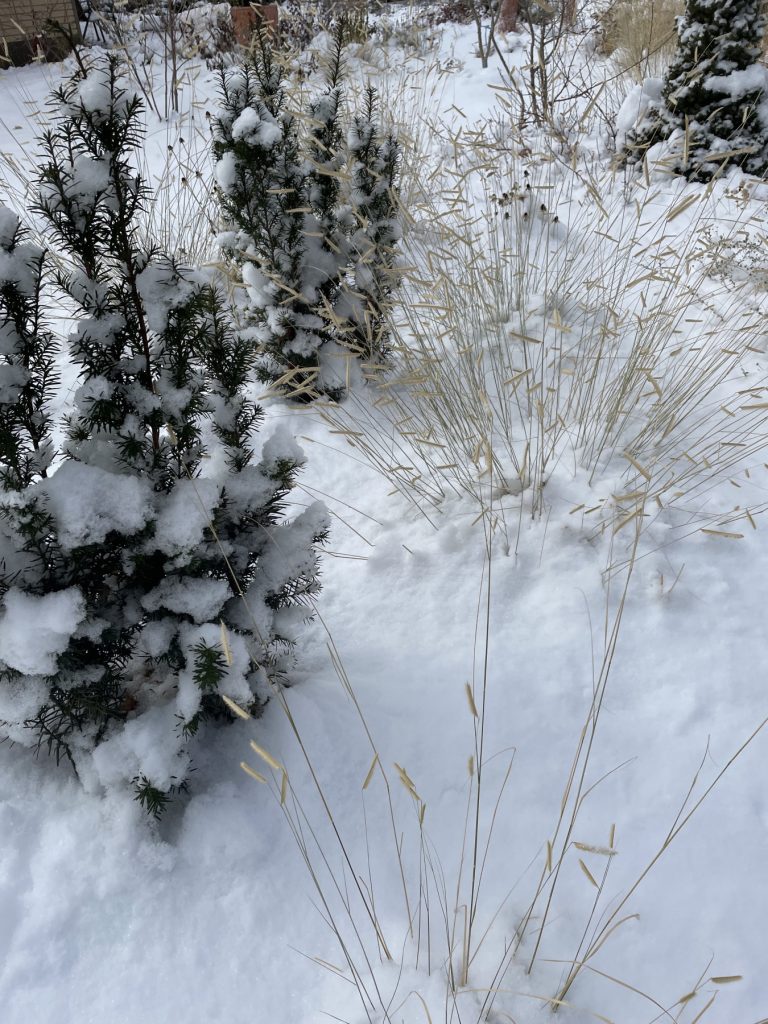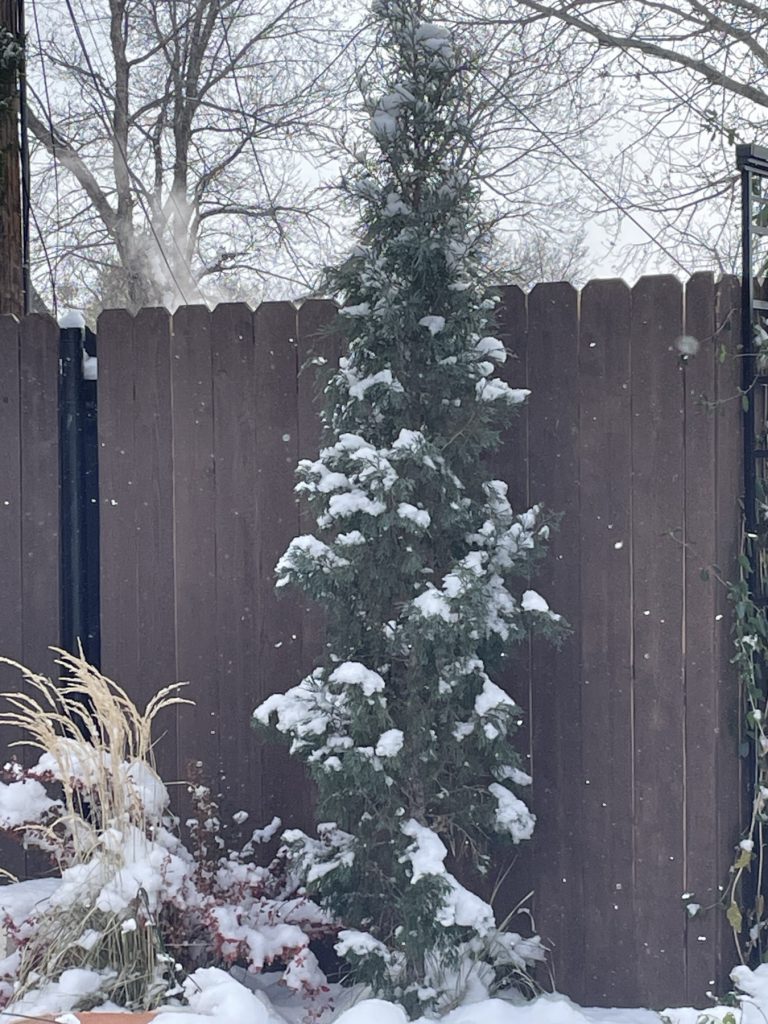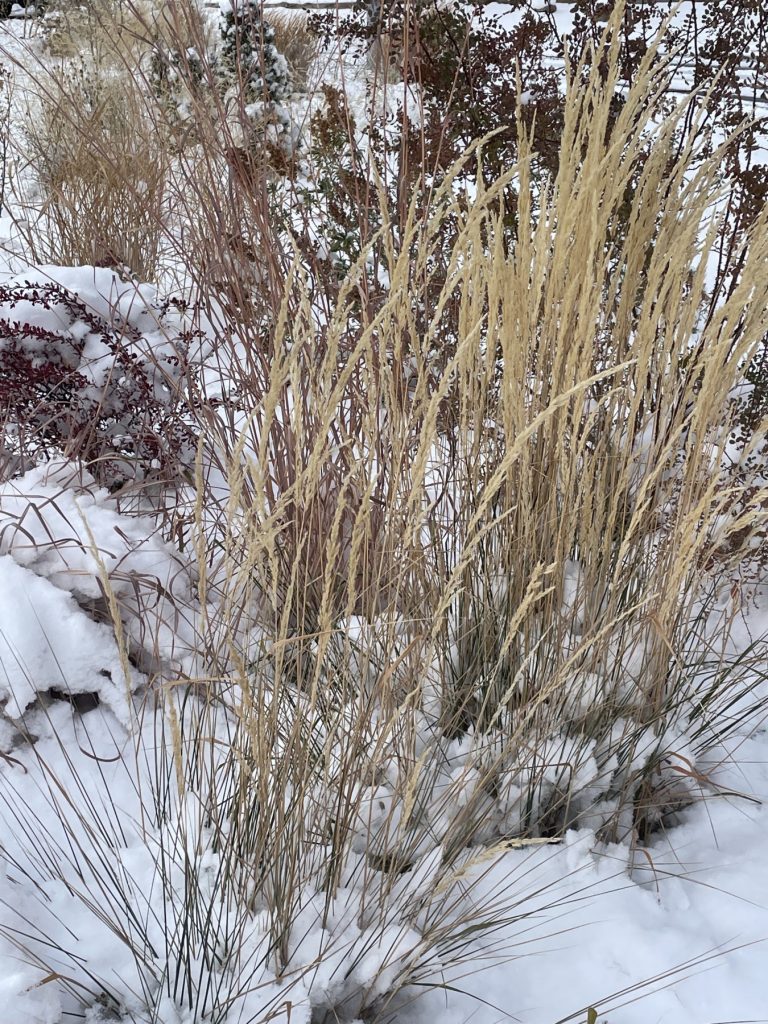In my neck of the woods, being the foothills of Pikes Peak in Colorado, the old chestnut about making hay while the sun shines, is rehearsed by me and my gardening clan as “make haste while the sun shines”. Old man winter is just around the next corner, and she who snoozes loses. Last week I was happily thinking about doing a fall sort out, and this morning as I write this on November 18, I am greeted by a six-inch blanket of snow. I’m sure that gardeners in other regions outside of mine are faced with the same, if not worse, conditions. To be honest, the garden looks rather lovely under its glistening mantle. Especially the grasses, their seedy heads dancing over the drifts.

It’s no bad thing to miss the moment of autumn when one might be tempted to tidy up. The black bobble seedheads of echinacea are forage, the snow-weighted branches of shrubs tenting over the perennial clumps give shelter to pollinators, and in a sunny spot a patch of soil scraped clean of mulch provides ground-nesting insects like bumblebees a refuge. As the melt happens, it waters the parched soil, opening it up for any future precipitation that happens to fall, either through hand-watering on clear, above-freezing days, or more snowfall, which is bound to happen before the spring clear up starts in late February (and probably again after that).
As you may have gathered from the first paragraph, I’m not the most methodical of gardeners, so I tend to prepare lists to “things to be done”. The sense of accomplishment as I draw line through each task completed is its own reward. This is accompanied by “notes to self” as I assess room for garden improvement. Surveying the garden after this first snowfall, I note “plant more evergreens” that give more structure to a garden in winter.

The late David Salman, founder of High Country Gardens, prepared a guide for folks who are new to gardening in the arid southwest. His seven tips are all about watering: in short, “keep an eye on the skies” and water at least once or twice a month if dry weather prevails and do so only if the weather is above freezing (and most of us are hunkered down over a cup of cocoa, anyway.) If you have lawn, water it too. Be sure to water evergreens as they have shallow root systems. Woody plants, too, require watering, but do so away from the trunk.

Bulbs store water, and if after planting must be watered through winter if they’re to flower in the spring – as I learned to my cost, when only 20 or so of the 250 bulbs I planted in autumn ’21 bloomed…talk about discouraging. Finally, “water with a purpose”; that being to prevent the roots desiccating in dry ground that has frozen solid.
So, there you have it. There’s always something new to learn about gardening, no matter how long you’ve been toiling and enjoying. It’s the main reason I garden – I love to learn. I also love to complain about it, and there’s lots of opportunities for that in every season. I wonder what December will throw at us?
©Ethne Clarke, 2022
Read David’s Salman’s to-do-list for winter gardening in the arid southwest at https://www.highcountrygardens.com/gardening/winter-watering. Be sure to peruse the nursery catalogue while you are there.
For a guide to winterizing the garden while keeping pollinators in mind, visit https://www.fws.gov/story/2022-08/winterize-your-pollinator-garden


